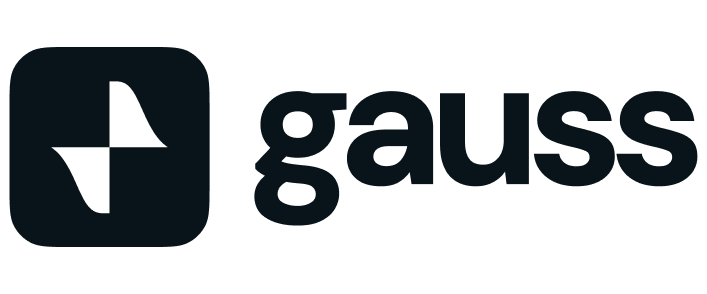When Do Student Loan Payments Resume?

Student loans are a form of financial aid designed to help students pay for post-secondary education and the associated fees, such as tuition, books, and living expenses. They differ from other types of loans in many ways, for instance, the interest rate may be substantially lower and the repayment schedule may be deferred while the student is still in school. Furthermore, they are offered to students by a variety of sources including federal and state governments, educational institutions, and private entities.
The process of acquiring a student loan usually begins with a financial needs assessment. The government or private lender then provides the funds, which the student is expected to repay after completing their education or dropping below a half-time student. However, the reality is often not as straightforward. Many students find themselves saddled with considerable debt, a situation which can lead to financial stress and strain.
While student loans can be a valuable resource, allowing individuals to pursue higher education that they might not otherwise be able to afford, they also represent a significant financial commitment. Understanding the terms of these loans, including when repayment begins, is therefore essential for any student considering this form of financial aid.
The Impact of COVID-19 on Student Loans
The COVID-19 pandemic has had a profound impact on all aspects of life, and student loans are no exception. As part of its response to the economic fallout of the pandemic, the U.S. government announced a forbearance period for federal student loans. This meant that borrowers were not required to make payments on their loans, and interest did not accrue during this period.
The student loans extension was a welcomed relief for many. It provided an opportunity for borrowers to reassess their financial situation without the added pressure of student loan repayments. The respite, however, was not designed to last indefinitely. It was a temporary measure meant to alleviate the immediate financial burden on borrowers during a particularly challenging time.
However, the ongoing financial challenges caused by the pandemic led to calls for further relief. Advocacy groups and some lawmakers pushed for an extension of the forbearance period, arguing that many borrowers were not in a position to resume payments.
Understanding the Student Loans Extension
The student loans extension was initially announced by the U.S. Department of Education in March 2020 as part of the CARES Act. This act put a pause on federal student loan payments, ensuring that interest did not accrue on these loans, and stopping collections on defaulted loans. The original end date was set for September 2020, but the extension has been pushed back multiple times due to the ongoing nature of the pandemic.
This extension has provided significant financial relief for many borrowers in a time of unprecedented economic uncertainty. By suspending loan payments, the government has given borrowers the opportunity to focus on immediate financial needs, such as housing and food, without the added stress of student loan repayments.
However, it's important for borrowers to understand that this is a temporary measure. The student loans extension is not a loan forgiveness program, and all payments will eventually need to be made. The key question for many is "when do student loan payments resume?"
When Do Student Loan Payments Resume?
The precise end date of the student loans extension has been a moving target, largely due to the unpredictable nature of the pandemic. Initially set for September 2020, the extension has been pushed back several times. The current end date is set for May 1, 2022. However, this date is subject to change depending on the state of the pandemic and the economy.
When the extension does end, borrowers will be expected to resume payments. This will include both the principal and the interest. It’s important to note that the suspension period has not reduced the amount owed – it has merely delayed the repayment period.
Repayment will not begin immediately after the end date. Borrowers will be given a notice period before they are expected to start making payments. This is designed to give borrowers time to prepare and adjust their budgets accordingly.
Strategies for Managing Student Loan Repayments
With the end of the student loans extension on the horizon, it's important for borrowers to start planning for repayment. There are several strategies that can be employed to manage student loan repayments effectively.
First, create a budget and stick to it. This includes setting aside a specific amount each month for student loan repayments. It’s also a good idea to start setting aside this amount now, even if payments are not yet due. This can help ease the transition when payments do resume.
Second, consider refinancing your student loans. This involves taking out a new loan to pay off your existing loans. The new loan typically has a lower interest rate, which can reduce the total amount you'll pay over the life of the loan.
Finally, consider enrolling in an income-driven repayment plan. These plans cap your monthly payments at a certain percentage of your discretionary income. They can make payments more manageable, especially for those with lower incomes.
Options for those Struggling with Student Loan Payments
While the end of the student loans extension may be cause for concern for some, it's important to know that there are options available for those struggling with payments. If you're having difficulty making your payments, don't simply ignore the problem. There are several avenues you can explore to make your loan repayments more manageable.
One option is to apply for an income-driven repayment plan. As mentioned earlier, these plans cap your monthly payments at a certain percentage of your discretionary income. If your income is low, your payments could be significantly reduced.
Another option is loan deferment or forbearance. These options allow you to temporarily stop making payments or reduce your payment amount for a certain period. However, it's important to note that interest may still accrue during this period, increasing the total amount you owe.
Finally, you could consider loan consolidation. This involves combining multiple federal student loans into one, which can make managing your loans easier. However, this may result in a higher interest rate, so it's important to consider this option carefully.
Understanding Student Loan Forgiveness and Relief Programs
In addition to the options mentioned above, there are also several student loan forgiveness and relief programs available. These programs can provide significant relief to those struggling with student loan debt.
Public Service Loan Forgiveness (PSLF) is available to those who work in certain public service jobs. Under this program, the remaining balance of your loans will be forgiven after you've made 120 qualifying payments while working for a qualifying employer.
Teacher Loan Forgiveness is available to teachers who have worked full-time for five consecutive years in a low-income school or educational service agency. This program can forgive up to $17,500 of your student loan debt.
Finally, there are several income-driven repayment plans that offer loan forgiveness after a certain period. These plans include Income-Based Repayment (IBR), Pay As You Earn (PAYE), and Revised Pay As You Earn (REPAYE). Under these plans, any remaining loan balance will be forgiven after 20-25 years of payments.
Steps to Take Before Student Loan Payments Resume
Before student loan payments resume, there are several steps you can take to prepare. First, make sure you understand when your payments will resume and how much they will be. You can find this information by logging into your loan servicer's website or contacting them directly.
Next, update your budget to include your student loan payments. If you've been setting aside money for your payments during the forbearance period, this step may be as simple as allocating that money to your loan payments.
You should also consider setting up automatic payments. Many loan servicers offer a small interest rate reduction to borrowers who set up automatic payments. Plus, it's an easy way to make sure you never miss a payment.
Finally, if you're concerned about being able to make your payments, don't wait until they resume to seek help. Contact your loan servicer to discuss your options. They may be able to provide you with a payment plan that fits your financial situation.
Resources for Student Loan Repayment Assistance
There are many resources available to help you navigate the process of repaying your student loans. The U.S. Department of Education's Federal Student Aid website is a great place to start. It offers comprehensive information about repayment plans, loan consolidation, and loan forgiveness programs.
Nonprofit organizations like The Institute of Student Loan Advisors (TISLA) also offer free unbiased advice to student loan borrowers. They can help you understand your options and make the best decision for your particular situation.
Finally, consider seeking the advice of a certified financial planner or credit counselor. These professionals can help you create a budget and a financial plan that includes your student loan payments.
Conclusion
The student loans extension has provided much-needed relief to many borrowers during the COVID-19 pandemic. However, with the end of the extension approaching, it's important for borrowers to begin planning for repayment. By understanding your options and seeking help if needed, you can successfully manage your student loan repayments and work towards financial freedom.
Do you have unpaid credit cards?
Gauss money can help pay off your credit cards easily. Pay off any credit card balance using a low-interest credit line from Gauss. You’ll save with a lower APR and you can pay off balances faster. Gauss offers no annual fees, no origination fees, and no fees of any kind. Check out Gauss for a lower APR today to maximize your credit cards.
Additionally, use tools like the credit card payoff calculator to visualize your progress overtime, and get insights into how much you should put towards your debt to achieve your debt free date. Our debt payoff calculator and debt tracker is 100% free to use via our website or our mobile app.
